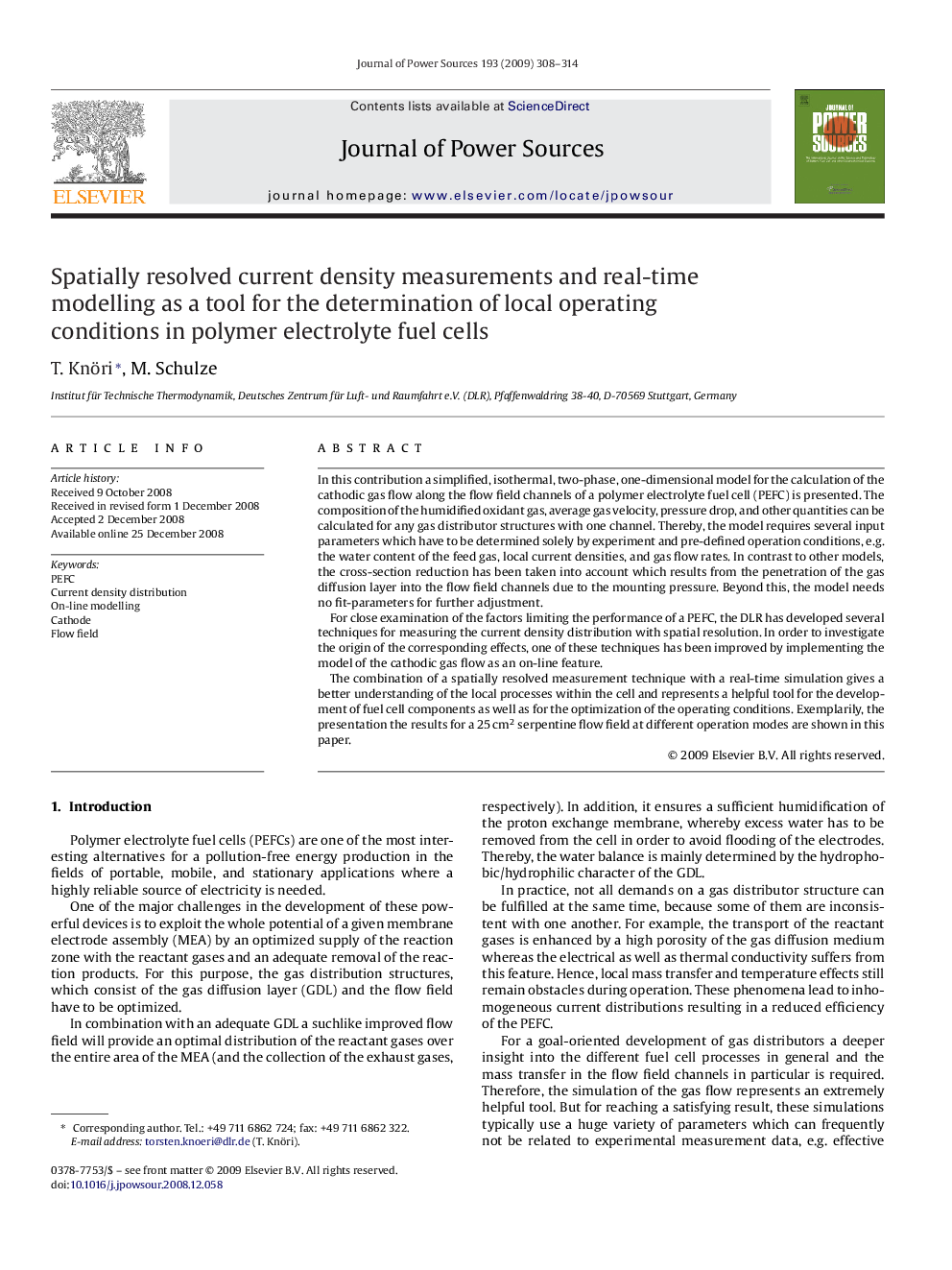| Article ID | Journal | Published Year | Pages | File Type |
|---|---|---|---|---|
| 1289486 | Journal of Power Sources | 2009 | 7 Pages |
In this contribution a simplified, isothermal, two-phase, one-dimensional model for the calculation of the cathodic gas flow along the flow field channels of a polymer electrolyte fuel cell (PEFC) is presented. The composition of the humidified oxidant gas, average gas velocity, pressure drop, and other quantities can be calculated for any gas distributor structures with one channel. Thereby, the model requires several input parameters which have to be determined solely by experiment and pre-defined operation conditions, e.g. the water content of the feed gas, local current densities, and gas flow rates. In contrast to other models, the cross-section reduction has been taken into account which results from the penetration of the gas diffusion layer into the flow field channels due to the mounting pressure. Beyond this, the model needs no fit-parameters for further adjustment.For close examination of the factors limiting the performance of a PEFC, the DLR has developed several techniques for measuring the current density distribution with spatial resolution. In order to investigate the origin of the corresponding effects, one of these techniques has been improved by implementing the model of the cathodic gas flow as an on-line feature.The combination of a spatially resolved measurement technique with a real-time simulation gives a better understanding of the local processes within the cell and represents a helpful tool for the development of fuel cell components as well as for the optimization of the operating conditions. Exemplarily, the presentation the results for a 25 cm2 serpentine flow field at different operation modes are shown in this paper.
